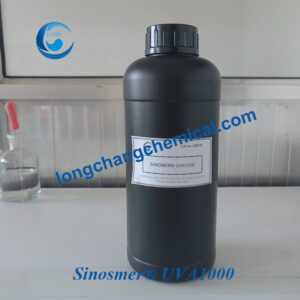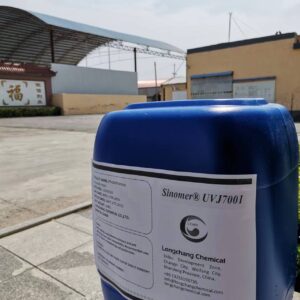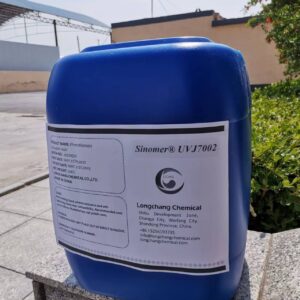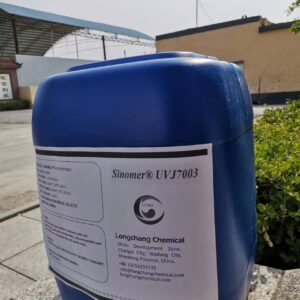Factors affecting the glass transition temperature Tg, melting temperature Tm, and viscous flow temperature Tf of polymers
The glass transition temperature (Tg), melt temperature (Tm) (crystalline polymers), and viscous flow temperature (Tf) (non-crystalline polymers) of polymers are important temperature parameters, with Tg determining the service temperature of the polymer and Tm and Tf determining the processing temperature of the polymer. Although there are many factors that affect the Tg, Tm and Tf values of polymers, but in general two, one is the influence of the structure and properties of oligomers, and the other is the influence of other factors.
First, the impact of polymer chain structure. Any chain structure factors that increase the chain rigidity can make Tg, Tm and Tf values increase, any chain flexibility to increase the chain structure factors can make Tg, Tm and Tf values decrease.
When rigid groups such as phenyl group, biphenyl group and conjugated double bond are introduced to the main chain, the rigidity of the chain will increase, and Tg, Tm and Tf will all increase; when ether bond and isolated double bond are introduced to the main chain, the chain will become flexible, and Tg, Tm and Tf will all decrease; when the side chain is a rigid group, the flexibility of the chain will decrease as the volume of the side group increases, and Tg, Tm and Tf will all increase; when the side chain is a flexible group or a flexible chain, the The larger the side chain, the better the flexibility, the better the flexibility of the whole molecular chain, Tg, Tm and Tf are reduced.
Second, intermolecular forces.
For polar polymers, there is strong interaction between polar groups on the molecular chain, and the intermolecular force is strong, and the values of Tg, Tm and Tf are larger than the corresponding values of non-polar polymers; and the values of Tg, Tm and Tf increase with the increase of intermolecular force.
Third, molecular weight.
Since Tm is related to crystallization, in general, molecular weight has little effect on Tm, and both Tg and Tf increase with the increase of molecular weight. For Tg, this trend is more obvious when the molecular weight is low, while the change of Tg is extremely slow when the molecular weight increases to a certain degree. The effect of molecular weight on Tf is much more significant than that on Tg. This is because the effect of molecular weight on Tg is attributed to the chain end effect, which can only show its effect when the chain end content in the system is relatively high, i.e., the molecular weight is relatively low; after the molecular weight is high to a certain extent and the weight of the chain end is small to almost negligible, its effect on Tg will not be obvious. The movement of the whole chain is achieved by the coordinated movement of all chain segments. The larger the molecular weight is, the more chain segments are needed to achieve the whole chain motion, and the more frictional force needs to be overcome during the motion, and the Tf will rise. Therefore, the Tf value is strongly dependent on the molecular weight.
The following are the effects of external factors on the Tg, Tm and Tf values of polymers.
Fourth, small molecule soluble additives.
Polymer molding process, sometimes to add plasticizers or other soluble additives in the ingredients. For polymers, these small molecules are equivalent to diluents, they will make the polymer Tg, Tm and Tf lower.
V. External forces.
Unidirectional external force has a driving effect on the chain segments, so increasing the external force can make Tg and Tf lower. And the extension of the external force is also conducive to the movement of molecules in the direction of the external force, which can also reduce Tf. The increase in pressure reduces the free volume and increases Tg and Tf. The effect of external force on Tm is as follows: when the polymer is crystallized under the action of tensile force, the crystallization ability is increased, which improves the crystallinity and also raises the melting point of crystallization, i.e., Tm is increased; crystallization under pressure can increase the thickness of the wafer, thus increasing the perfection of the crystal, which also makes Tm increase.
VI. Test rate.
This is in terms of the magnitude of the test value obtained from the temperature test aspect. Since the motion of polymer chains is a relaxation process and is time dependent, there is a relationship between the Tg test value and the experimental time scale: increasing the rate of temperature increase or the frequency of dynamic experiments will increase Tg. The same is true for Tf, while the opposite is true for Tm. When testing the Tm value, if the temperature is increased slowly, the imperfect grains can be melted first and then recrystallized into more perfect and stable crystals at a slightly higher temperature. The last measured «melting point» is the temperature at which all the more perfect crystals melt, and is higher than the value measured at a rapid temperature rise.
-
Monomer EATM CAS 55818-57-0 & 15625-89-5
Подробнее -
Monomer EATP CAS 55818-57-0 & 42978-66-5
Подробнее -
Monomer UVA1000 / Чистый акрилат
Подробнее -
Monomer UVB2000 / Для передовых УФ-красок для пластика
Подробнее -
Monomer UVJ7001 / Смола для фототерапии лака для ногтей
Подробнее -
Monomer UVJ7002 / Смола для фототерапии лака для ногтей
Подробнее -
Monomer UVJ7003 / Смола для фототерапии лака для ногтей
Подробнее -
Monomer UVJ7004 / Смола для фототерапии лака для ногтей
Подробнее -
Monomer UVJ7005 / Смола для фототерапии лака для ногтей
Подробнее -
Monomer UVJ7006 / Смола для фототерапии лака для ногтей
Подробнее -
Monomer UVJ7007 / Смола для фототерапии лака для ногтей
Подробнее -
Monomer UVU61201 / Алифатический полиуретан додецилакрилат
Подробнее -
Monomer UVU6205
Подробнее -
Monomer UVU6212
Подробнее -
Monomer UVU6219 / Алифатический полиуретановый диакрилат
Подробнее -
Monomer UVU6305 / Алифатический полиуретановый триакрилат
Подробнее -
Monomer UVU6451 / Для передовых УФ-красок для пластика
Подробнее -
Monomer UVU6609 / Алифатический полиуретановый гексаакрилат
Подробнее -
Monomer UVU6906 / Алифатический полиуретан IX акрилат
Подробнее -
Сырье для лака для ногтей — УФ-олигомер
Подробнее



















